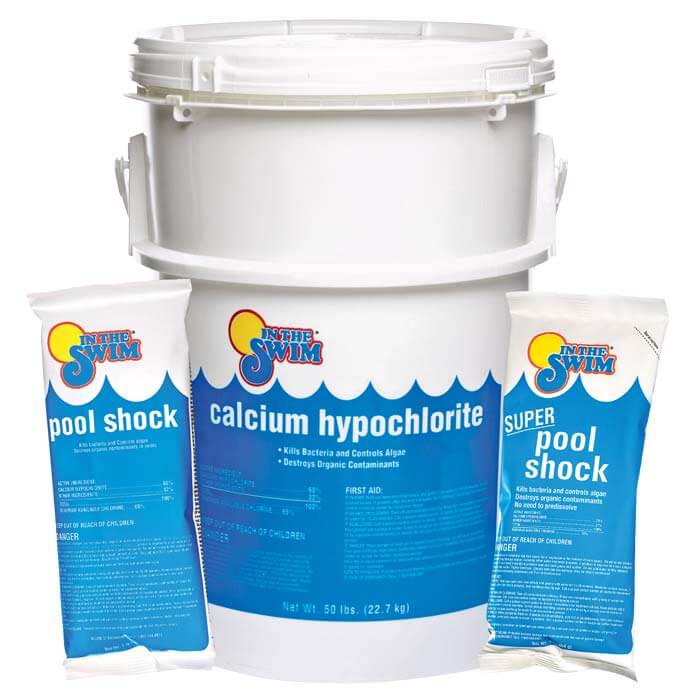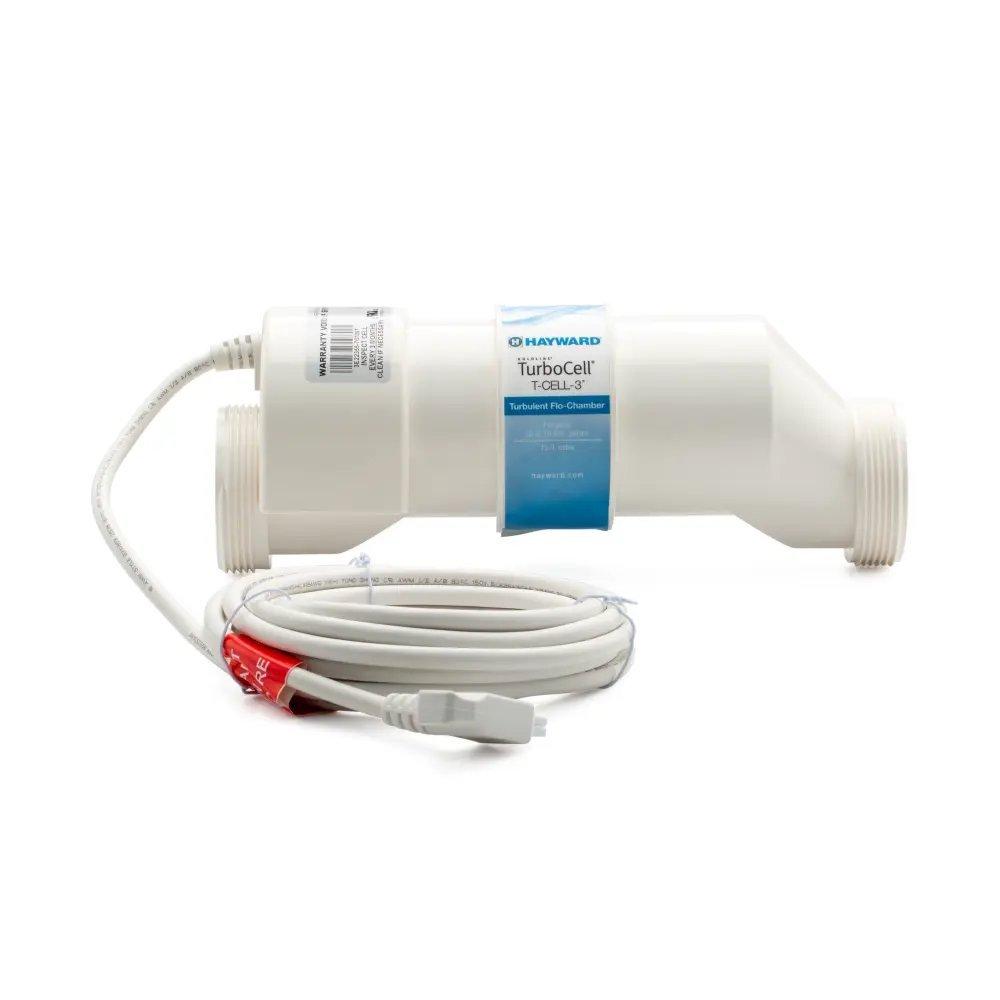FREE Standard Shipping On All Orders $100 or More!*

Saltwater Pool Conversion FAQ
Saltwater pools have gained immense popularity over the years, and have become a top choice for many pool owners. They're known for being low maintenance, and the water tends to feel more gentle and soothing. But even though saltwater pools are becoming more popular, there are still plenty of misconceptions out there. Today, we’ll answer the most frequently asked questions about saltwater pools and how to make a conversion to a saltwater system.
What is the Cost to Convert to a Saltwater Pool?
The cost of converting from chlorine to a saltwater sanitation system depends on the salt system purchase price, the price of pool salt, and any installation fees. Pool size and equipment compatibility also dictate how much a saltwater pool conversion will cost. Let's break down the costs of converting to a saltwater system.
Price of a Salt System
Salt systems are comprised of two main features, the salt system controller and the salt cell. These two components work together to transform simple salt into sanitizing chlorine for your pool water. The Hayward AquaRite and SwimPure systems cost anywhere from $850–$1,800, depending on the output required for your pool's volume. Other popular salt systems include the Pentair EasyTouch and IntelliChlor systems, often around $1,500 or higher. And if a professional installs your new salt system, prepare to spend an additional $100–$250 or more for the service fee.
Price of Pool Salt
Pure, high-quality pool salt is the main ingredient needed for your saltwater pool conversion. But how much salt do you need? Well, that depends on a few factors, so let's discuss.
The first step to figuring out how much pool salt you need is to calculate your pool's volume in gallons. Once established, determine the ideal salinity level, based on the salt system manufacturer's recommendations. Salinity levels vary from brand to brand, but the average range is around 2,800–3,200 ppm (parts per million). Use the following equation to calculate how many pounds of salt your pool needs:
8.375 x Salinity Increase ÷ 100 = Pounds of salt per 10,000 gallons
Say, for example, you have a 15,000-gallon pool with zero salinity, and need to raise the salt level to 3,200 ppm:
8.375 x 3,200 ppm ÷ 100 = 268 lbs of salt per 10,000 gallons
Conversion: 268 lbs x (15,000 gal ÷ 10,000 gal) = 402 pounds of salt for 15,000 gallons
Based on the example equation, you would need to purchase 10 40-pound bags of pool salt. A standard 40-pound bag of salt will usually cost about $10–$15, depending on the brand and quality. In general, it's cheaper to purchase pool-grade salt at your local pool supply or hardware store than online. Based on the calculation above, you'll spend roughly $100–$150 on pool salt, especially if you buy it in store and avoid hefty shipping fees!
Are Saltwater Pools Chlorine Free? 
This is by far the biggest misconception regarding saltwater sanitation systems. The quick answer is no — saltwater pools are not chlorine free. At the heart of every salt system is a chlorine generator cell, which produces a consistent, low-level supply of chlorine. While saltwater pools contain a significantly lower amount of chlorine than traditional chemically chlorinated pools, chlorine is still present to sanitize the water. However, the biggest benefit of a salt system is that the chlorine levels are self-regulating, meaning you don't have to manually add chlorine. The only time you’ll need to handle chemicals is when balancing and shocking the pool.
Can You Convert a Chlorine Pool to a Saltwater Pool?
Absolutely! As mentioned above, a saltwater pool technically is a chlorine pool, so it’s pretty easy to make the conversion to a saltwater pool. A salt chlorinator, also called a saltwater chlorine generator, uses electrolysis to convert the salt in your pool water into usable chlorine. Simply install your new salt system, add the proper amount of non-iodized pool salt to the water, then test and balance the water before running the chlorine generator.
Will My Pool Taste Salty?
Not if you did the calculation above correctly! The average salinity reading for a saltwater pool is between 2,800–3,200 ppm, which is considered only slightly saline according to scientific standards. The average person can't taste salt if it's below the level of 3,500 ppm, so a well-balanced salt pool won’t have a salty taste. By comparison, human tears are twice as salty at 6,000 ppm, and the ocean is more than 10x saltier at 35,000 ppm.
Are Salt Systems Hard to Install? 
If you’re comfortable working with electrical wiring and cutting/gluing your pool’s PVC pipes, you can easily do a saltwater pool conversion yourself, and save a few bucks on installation fees. The salt cell should be the last component on the equipment pad before the water returns to the pool. This is so the chlorine production doesn’t corrode important pool equipment, like your pump or heater. This layout also prevents your chlorine from getting diluted or used up on debris in the filter. Installing the salt system last in line ensures the most efficient chlorine generation and best overall results.
Remember to keep the salt cell turned off until the salt has had time to completely dissolve in your pool. This usually takes about 24 hours and a few rounds of brushing the bottom of the pool. Slowly add the salt to your pool to avoid oversaturating the water. If salt levels get too high, you’ll need to partially drain and refill the pool to dilute the salt content. Once you’ve reached an acceptable salinity and the salt crystals have dissolved, it’s time to turn the salt chlorinator on.
What Kind of Salt Chlorinator Do I Need?
There are many salt systems on the market today, so it's important to do plenty of research before purchasing your new system. To get the most bang for your buck, there are a few key factors to consider:
Pool Volume in Gallons
Each salt system is rated for a certain number of gallons, but you don’t necessarily want to match this number to your pool. If you buy a 30,000 gallon salt system for your 30,000-gallon pool, you’re going to be running the salt cell at maximum capacity all the time. This isn’t good for the life of your salt cell. Instead, get a salt system that’s rated at least 25% higher than your pool’s volume. Not only will the salt cell last longer, but it will also be better equipped to handle water sanitization concerns. Buy a chlorinator that can keep up with sanitizer demand from swimmers, organic debris, rain storms, high temperatures, and other scenarios that use up a lot of chlorine.
Required Salinity Level
The next thing to consider is the salinity range required by the salt chlorinator. The less salt you have to add to the water, the less corrosion you’ll see in your pool over time. Some systems demand levels above 3,500–4,000 ppm, which is not ideal for some pools. A few low-level salt systems are available, but may not be as efficient as those in the mid-to-higher ranges.
Maximum Output of the Salt System
Last, but not least, look at the maximum chlorine output of the salt system. Daily output ratings and lifetime output calculations help estimate the lifespan of the salt cell. Many factors play into this number, but more hours equal longer periods between cell replacements. For an average pool, salt cells generally last 3–5 years.
What are the Pros and Cons of a Saltwater Pool Conversion?
Is a saltwater pool better than a standard chlorine pool? It depends. As we mentioned earlier, a saltwater pool is technically a type of chlorine pool. But should you make the leap for a saltwater pool conversion? There are a few key differences between the two that can help you decide if a saltwater pool is right for you.
Pros of Saltwater Pools

- Water is softer on eyes and skin — no itching, burning, or dryness.
- Lower chlorine levels won’t fade swimsuits or turn blonde hair green.
- No strong, unpleasant chlorine odors from chloramines.
- Chlorine production is automatic and self-regulating, so you don’t have to manually add chlorine unless shocking.
- No storing and handling large quantities of chlorine.
- Annual cost of pool salt is less than the cost of chlorine tablets or granules. After startup, salt for the pool only costs about $20–$30 per year.
- Most salt cells only need to be replaced every 3–5 years.
Cons of Saltwater Pools

- High initial investment cost for a new salt system and pool salt.
- Salt cells are costly to replace, and will usually negate any savings made on reduced chemical usage.
- Add stabilizer separately to keep Cyanuric Acid levels balanced
- Salt increases the potential for galvanic corrosion of metal parts and equipment.
- Equipment and pool damage caused by galvanic corrosion can be costly to repair.
- Bond your pool and equipment, and use sacrificial zinc anodes to combat corrosion in your pool.
- pH levels tend to rise with a saltwater system, so it’s important to keep the water balanced with a pH reducer or acid.
- Some city ordinances don't allow saltwater pools, because saltwater is harmful to plants and soil. Others restrict draining into city sewer systems. Check the laws in your area before starting to convert your pool to a salt system.
- You'll need a special test kit to detect salt levels in the water. The level shown on your salt system may not always be accurate, so it's important to test separately to confirm.
- Some pool surfaces or equipment types may not be compatible with salt systems. Check first to prevent voiding your manufacturer warranties.
We hope this post has answered some of your burning questions about saltwater pool conversions. At the end of the day, there is no right or wrong answer to which type of pool is better — it all depends on personal preference.
* Prices are subject to change without notice. In the event that the price listed in this post does not match the price listed on intheswim.com, the price listed on the product page should be considered accurate.